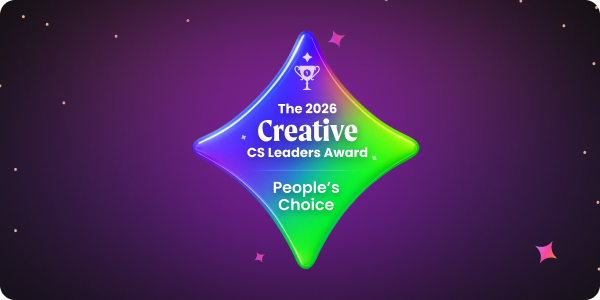Creating a winning customer engagement strategy is crucial for any business aiming for growth. Effective engagement can drive customer loyalty, enhance satisfaction, and improve overall sales performance. Here is a step-by-step guide to help you create a successful customer engagement strategy:
1. What is a Customer Engagement Strategy?
Think of a customer engagement strategy as building a beautiful friendship. It's about connecting, understanding, and nurturing a relationship that's based on mutual respect and trust. It goes beyond firing off generic newsletters or solving support tickets. It's about establishing a bond with customers that’s memorable and enduring.
In this interconnected, digital-centric era, a myriad of opportunities arise to interact with customers in new and compelling ways. The goal is to make every customer's journey an extraordinary one. That includes getting to know customers well, anticipating their needs, and delivering tailored experiences that bring joy and value to their interactions with the product or service.
When a customer engagement strategy is expertly crafted and executed, the results are remarkable. The signs of success include higher user adoption, lower churn, and an increased customer lifetime value. In other words, a thriving, growing business.
Ready to dive deeper into this fascinating topic? Great, let's explore this journey together.
{{digital-cs}}
2. Choosing the Right Engagement Strategy: Understanding the Customer Journey
Customer journeys are unique, and so should be the engagement strategies. Here's a four-step approach to identify the perfect strategy:
Segment Your Customers: All customers are unique. Dividing them into segments based on their behaviors, demographics, and preferences helps cater to their specific needs.
Map the Customer Journey: Identify each interaction point from the moment a customer discovers your product to their most recent interaction. This gives a clear picture of the customer experience.
Understand Customer Needs: Analyze the customer journey to identify customer needs at each interaction point.
Tailor Your Approach: Create customized engagement strategies to meet the needs identified. Remember, a strategy that works for one segment might not work for another.
3. Engagement Secrets from Top SaaS Companies: Real-life Examples
Unfolding the stories of successful SaaS companies can provide valuable insights into effective customer engagement strategies. Let's delve into a few real-life examples:
Personalization: Adobe
Adobe, with its extensive suite of products, excels at personalization. Through Adobe Experience Cloud, they provide a customized experience to users by using machine learning and artificial intelligence to predict customer preferences, thereby delivering personalized content in real-time. This customization also includes a free online QR code generator, allowing users to effortlessly create personalized QR codes tailored to their specific needs.
Customer Interface: Gong
Gong, a leading conversation analytics platform, takes customer engagement to the next level with their customer Interface powered by EverAfter. This digital space serves as a one-stop-shop for customers during onboarding and throughout their lifecycle. It includes resources, personalized success plans, and much more. This engagement strategy keeps customers supported, informed, and connected, enhancing their overall experience.

Omnichannel Support: Slack
Slack is well-known for its impeccable omnichannel support. They extend assistance through multiple channels, including their in-app help center, social media, and email, ensuring a seamless experience for customers across all touchpoints.
User-friendly Interface: Dropbox
Dropbox, the renowned file hosting service, offers an extremely user-friendly interface. Its clean and intuitive design simplifies the process of uploading, storing, and sharing files, leading to a positive customer experience.
Regular Software Updates: Atlassian
Atlassian, the team behind products like Jira and Trello, excels at providing regular software updates. They frequently roll out new features and improvements, keeping their products relevant and appealing to users.
Customer Education: HubSpot
HubSpot is a prime example of a company that prioritizes customer education. They offer an extensive resource library, including blogs, webinars, and guides, to help customers understand and leverage their marketing, sales, and service software.
By dissecting these examples, it's clear that an effective customer engagement strategy revolves around understanding customer needs and delivering personalized, seamless experiences across various stages of the customer journey. And all these while continually providing value and fostering customer success. That's the secret sauce of these top SaaS companies!
4. Building an Effective Engagement Plan: A Step-by-Step Guide
Building a powerful customer engagement plan isn't rocket science. With the right approach and considerations, it can be quite straightforward. Here is a simple step-by-step template that also includes some 'dos and don'ts':
Step 1 – Define Your Goals:
Must Do: Set clear, specific, and measurable objectives for your engagement strategy. These goals should align with your overall business objectives and aim to enhance customer satisfaction and loyalty.
Must Not Do: Don't set goals without any clear direction or understanding of your business's needs. Avoid being too vague or unrealistic with your objectives.
Step 2 – Understand Your Audience:
Must Do: Invest time and resources in researching your customers. Understand their needs, preferences, and behaviors. Use tools like customer interviews, surveys, and data analytics to get a comprehensive picture of your audience.
Must Not Do: Don't make assumptions about your audience or rely solely on demographic data. Avoid one-size-fits-all strategies; remember that your audience is made up of unique individuals with different needs.
Step 3 – Choose Engagement Methods:
Must Do: Based on your understanding of your audience, select engagement methods that are most likely to resonate with them. This could be anything from personalized emails, social media engagement, webinars, to customer success programs.
Must Not Do: Don't select engagement methods purely based on trends or what your competitors are doing. What works for one company may not work for another.
Step 4 – Implement the Strategy:
Must Do: Once you've chosen your engagement methods, roll them out systematically and coherently. Make sure every team interacting with customers understands and is on board with the strategy.
Must Not Do: Don't launch all your engagement methods at once without testing. Avoid inconsistency in your messaging and ensure the strategy aligns with your brand voice and values.
Step 5 – Measure and Adjust:
Must Do: Consistently track the effectiveness of your strategies. Use KPIs to measure results and make necessary adjustments based on performance and feedback.
Must Not Do: Don't ignore the data or be resistant to change. Avoid sticking with strategies that are clearly not working, and be open to refining your plan as needed.
In summary, the foundation of an effective customer engagement plan lies in understanding your audience, setting clear goals, choosing the right engagement methods, implementing them consistently, and continually measuring and refining your strategy. It's an ongoing journey of learning, adapting, and improving to build meaningful and lasting relationships with your customers.
.png)
5. Measuring Success: Why, How, Who, and What to Look At
Understanding the success of your engagement strategy is paramount for several reasons. It offers a clear picture of what's working and what needs improvement, provides insights into customer behavior and preferences, and ultimately, it guides your strategy to better align with your business objectives. But how often should you evaluate your strategy, who should you involve, and what are the key metrics to monitor?
Frequency of Evaluation:
Your customer engagement strategy isn't a set-and-forget scenario. It's a living, breathing aspect of your business that should be continuously monitored and optimized. While it's essential to give your strategies enough time to generate measurable results, typically, a quarterly review should provide a good balance between responsiveness and stability. However, if significant changes occur in your business or market, more frequent evaluations might be necessary.
Key Stakeholders:
A successful customer engagement strategy involves multiple stakeholders. Your marketing team can help drive initial engagement, while your sales team can turn that engagement into conversions. Post-sale, your customer success and support teams take over, ensuring ongoing engagement and support. Involving all these teams in the evaluation process provides a holistic view of your strategy and fosters a collaborative approach to customer engagement.
The Most Important KPI:
While all the KPIs mentioned earlier are valuable, the most crucial one depends on your business objectives. If you're focusing on building strong, lasting relationships with your customers, then Customer Lifetime Value (CLTV) might be your key metric. CLTV gives you insight into the total revenue you can expect from a single customer, reflecting customer loyalty and satisfaction.
If your goal is to gauge the immediate impact of your engagement efforts, then the Engagement Rate can be more indicative, as it includes metrics like the number of active users, frequency of use, and time spent on the platform.
Here's a recap of the KPIs to consider:
Customer Retention Rate: A high retention rate indicates satisfied customers who continue to use your product or service.
Net Promoter Score (NPS): This measures how likely customers are to recommend your company to others - a great indicator of customer satisfaction and loyalty.
Customer Lifetime Value (CLTV): This indicates the total revenue expected from a single customer account, reflecting customer loyalty and satisfaction.
Engagement Rate: This can include various metrics like the number of active users, frequency of use, and time spent on the platform.
Churn Rate: This shows the number of customers who stop using your product over a given period. A low churn rate is a sign of high customer satisfaction.
Remember, while metrics provide crucial insights, they are not the end-goal. They are tools that guide your engagement strategy towards building meaningful relationships with your customers and driving sustainable growth for your business. Let's embark on this measurement journey, shall we?


.avif)

.png)

.png)




%20(1).png)
















.png)
.png)
.png)



.avif)





.png)
.png)







